Aquatic Weed Control: Tips For Controlling Weeds In Water Gardens
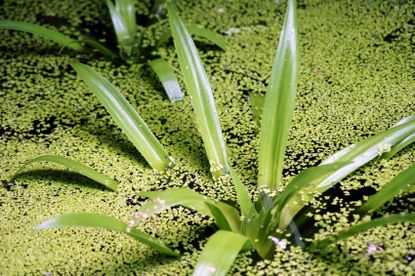

Some of the most lovely and interesting plants for pools and ponds become weeds when conditions are favorable for their rampant growth. Once established, these plants are very difficult to control. This article will tell you more about controlling weeds in water gardens.
What are Water Garden Weeds?
Whether or not a water garden plant is a weed depends on where it is growing. In some cases, harsh winters help keep weeds in check. In warm areas, many common water garden plants become weeds. For example, these are all considered noxious weeds:
- Water hyacinths
- Drifts of duckweed
- Giant Salvinia
- Hydrilla
- Creeping water primrose
- Cattails
- Some types of water lilies
Some of them present such an extreme danger to the environment that they are forbidden in some states. You may think that a plant that reproduces quickly to fill your garden pond with flowers and foliage is just what you're looking for, but you'll soon find out why you want to avoid them. The constant battle to keep them under control is more than most gardeners want to deal with, and you risk damaging the environment if they escape into waterways, lakes, and streams. Water garden weeds can clog waterways, make passage by boat impossible, and endanger fish and other wildlife by depriving them of sunlight and oxygen.
Controlling Weeds in Water Gardens
Here are some aquatic weed control methods suitable for garden ponds:
- The mechanical removal of weeds that like water is the most work, but also the most environmentally friendly. It leaves no chemical residue or decaying plants that can encourage algae blooms. Use a net to remove floating weeds and rake the bottom of the pond to remove weeds rooted in the soil.
- Woven or plastic barriers prevent the growth of weeds that root in the bottom of the pond by blocking out sunlight. They are expensive to use but very effective. Barriers don't prevent floating weeds.
- There are a number of herbicides approved for use in garden ponds. Identify an herbicide that lists the plant on the label. Buy an herbicide labeled for use in ponds, and never use more than the recommended amount.
- Grass carp are artificially produced fish that are incapable of reproduction, so they can't overpopulate an area. They consume at least their weight in vegetation every day. Common carp control filamentous algae by feeding on them at the bottom of the pond. One problem with common carp is that they keep the pond muddy because of their feeding habits.
Find out more about invasive water garden plants in your area by contacting your local Cooperative Extension Agent. Note: Any recommendations pertaining to the use of chemicals are for informational purposes only. Chemical control should only be used as a last resort, as organic approaches are safer and more environmentally friendly.
Gardening tips, videos, info and more delivered right to your inbox!
Sign up for the Gardening Know How newsletter today and receive a free download of our DIY eBook "Bring Your Garden Indoors: 13 DIY Projects For Fall And Winter".

Jackie Carroll has written over 500 articles for Gardening Know How on a wide range of topics.
-
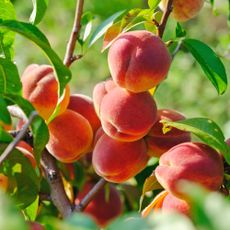 8 Best Fruit Trees To Plant As Bare Roots In Fall – For The Fastest, Sweetest Harvest
8 Best Fruit Trees To Plant As Bare Roots In Fall – For The Fastest, Sweetest HarvestGet a head start on home harvests by planting bare-root fruit trees this fall. Find the best varieties and learn tips for planting and caring for new trees.
By Mary Ellen Ellis
-
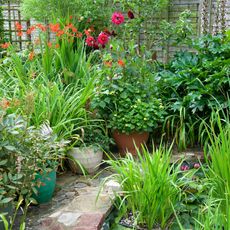 5 Urban Garden Ideas For Any Home – Add Natural Flair To The Tiniest Living Spaces
5 Urban Garden Ideas For Any Home – Add Natural Flair To The Tiniest Living SpacesJust because you live in a city, town or built-up area doesn’t mean you have to do without! Try these urban garden ideas to make a green haven even in limited space
By Mary Ellen Ellis
-
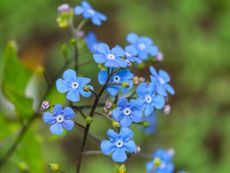 Flowering Pond Plants - Growing Aquatic Flowers
Flowering Pond Plants - Growing Aquatic FlowersAdding flowering pond plants to natural and manmade water features can be an easy way to quickly beautify a space with lush greenery and vibrant bursts of seasonal color. Read on for more.
By Tonya Barnett
-
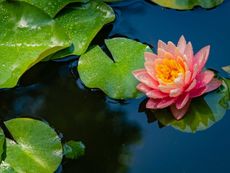 Full Sun Aquatic Plants - Full Sun Floating Pond Plants
Full Sun Aquatic Plants - Full Sun Floating Pond PlantsThere are pros and cons to putting a pond in full sun, but it's very doable. Here are some ideas to get you started.
By Mary Ellen Ellis
-
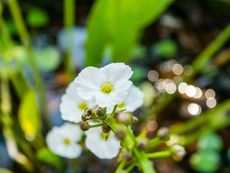 Echinodorus Creeping Burhead – Information On Creeping Burhead Plant Care
Echinodorus Creeping Burhead – Information On Creeping Burhead Plant CareCreeping burhead plants are members of the water plantain family and commonly used in freshwater aquariums or outdoor fishponds. Echinodorus creeping burhead is native to the eastern half of the United States. To learn more about the creeping burhead plant click the following.
By Laura Miller
-
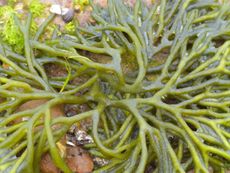 What Is A Saltwater Aquarium: Plants For Saltwater Aquariums
What Is A Saltwater Aquarium: Plants For Saltwater AquariumsBuilding and maintaining a saltwater aquarium requires some expert knowledge in choosing the right plants. Here are some choices to start with.
By Mary Ellen Ellis
-
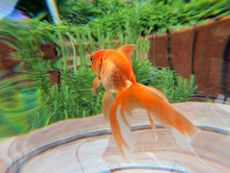 Outdoor Aquarium Ideas: Putting A Fish Tank In The Garden
Outdoor Aquarium Ideas: Putting A Fish Tank In The GardenAquariums are generally made for inside the house, but why not have a fish tank outside? Click here for tips and ideas on backyard aquariums.
By Mary Ellen Ellis
-
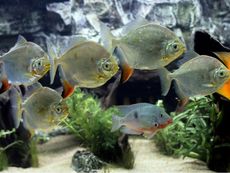 Fish That Eat Plants – Which Plant Eating Fish Should You Avoid
Fish That Eat Plants – Which Plant Eating Fish Should You AvoidGrowing plants with aquarium fish is rewarding, but if you want to combine plants and fish, learn what aquarium fish to avoid. This article will help.
By Mary H. Dyer
-
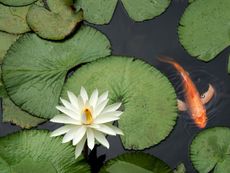 Is Pond Fertilizer Bad For Fish: Learn About Fish Safe Fertilizer
Is Pond Fertilizer Bad For Fish: Learn About Fish Safe FertilizerUsing fertilizer around fishponds must be done with care. Excess nitrogen causes algae, but can also contaminate the water and affect fish. Learn more here.
By Bonnie L. Grant
-
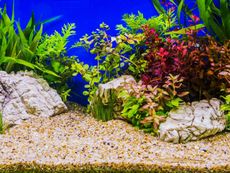 What Is Aquascaping – Creating An Aquarium Garden
What Is Aquascaping – Creating An Aquarium GardenAquatic gardening can be a rewarding endeavor, especially when aquascaping. Click this article to learn more about creating an aquarium garden.
By Nikki Tilley